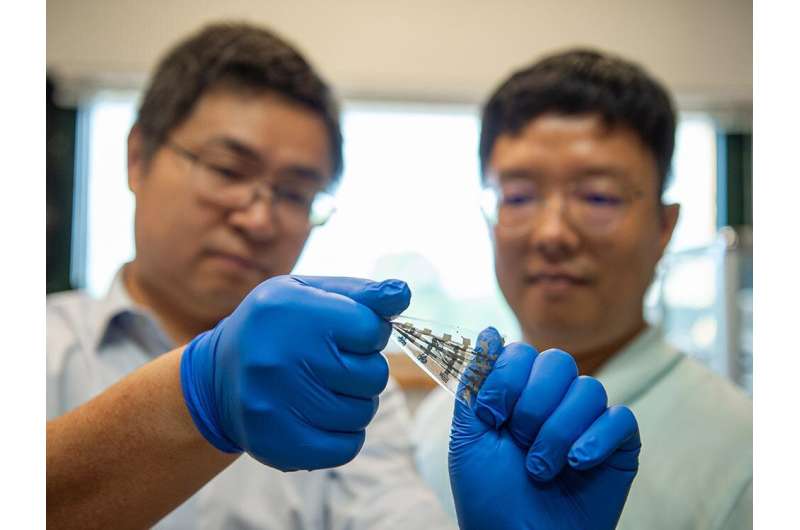
Robotics and wearable devices might soon get a little smarter with the addition of a stretchy, wearable synaptic transistor developed by Penn State engineers. The device works like neurons in the brain to send signals to some cells and inhibit others in order to enhance and weaken the devices’ memories.
Led by Cunjiang Yu, Dorothy Quiggle Career Development Associate Professor of Engineering Science and Mechanics and associate professor of biomedical engineering and of materials science and engineering, the team designed the synaptic transistor to be integrated in robots or wearables and use artificial intelligence to optimize functions. The details were published Sept. 29 in Nature Electronics.
“Mirroring the human brain, robots and wearable devices using the synaptic transistor can use its artificial neurons to ‘learn’ and adapt their behaviors,” Yu said. “For example, if we burn our hand on a stove, it hurts, and we know to avoid touching it next time. The same results will be possible for devices that use the synaptic transistor, as the artificial intelligence is able to ‘learn’ and adapt to its environment.”
According to Yu, the artificial neurons in the device were designed to perform like neurons in the ventral tegmental area, a tiny segment of the human brain located in the uppermost part of the brain stem. Neurons process and transmit information by releasing neurotransmitters at their synapses, typically located at the neural cell ends. Excitatory neurotransmitters trigger the activity of other neurons and are associated with enhancing memories, while inhibitory neurotransmitters reduce the activity of other neurons and are associated with weakening memories.
“Unlike all other areas of the brain, neurons in the ventral tegmental area are capable of releasing both excitatory and inhibitory neurotransmitters at the same time,” Yu said. “By designing the synaptic transistor to operate with both synaptic behaviors simultaneously, fewer transistors are needed compared to conventional integrated electronics technology, which simplifies the system architecture and allows the device to conserve energy.”
To model soft, stretchy biological tissues, the researchers used stretchable bilayer semiconductor materials to fabricate the device, allowing it to stretch and twist while in use, according to Yu. Conventional transistors, on the other hand, are rigid and will break when deformed.
“The transistor is mechanically deformable and functionally reconfigurable, yet still retains its functions when stretched extensively,” Yu said. “It can attach to a robot or wearable device to serve as their outermost skin.”
Neuromorphic memory device simulates neurons and synapses
Hyunseok Shim et al, An elastic and reconfigurable synaptic transistor based on a stretchable bilayer semiconductor, Nature Electronics (2022). DOI: 10.1038/s41928-022-00836-5
Citation:
Stretchy, bio-inspired synaptic transistor can enhance or weaken device memories (2022, September 30)
retrieved 30 September 2022
from https://techxplore.com/news/2022-09-stretchy-bio-inspired-synaptic-transistor-weaken.html
This document is subject to copyright. Apart from any fair dealing for the purpose of private study or research, no
part may be reproduced without the written permission. The content is provided for information purposes only.
For all the latest Technology News Click Here
For the latest news and updates, follow us on Google News.

